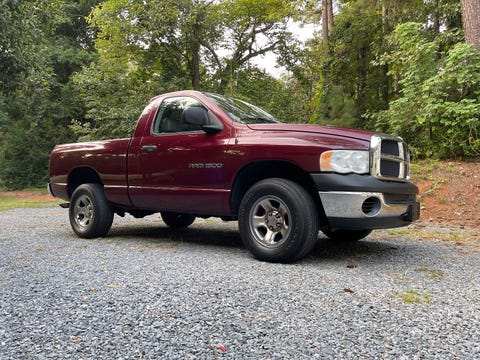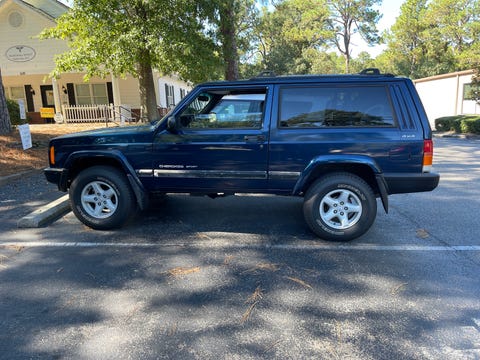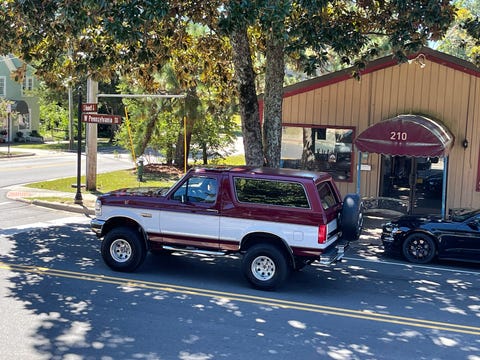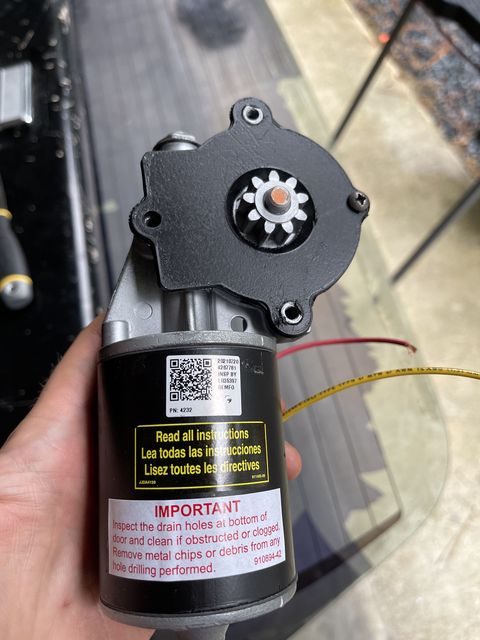Let me begin by saying that I generally respect the New York Times and still subscribe, even though they eviscerated their automotive section years ago—and with it the reviews I used to write there. But I harbor no ill will toward the Times, despite the fact that they no longer run Dodge Journey reviews that include ten Journey song references. So it brings me no joy to point out that the Times periodically embraces a premise that could only make sense in Manhattan, and even then only on certain blocks. Case in point: last week’s piece entitled “Rural America’s Roads Might Resemble Cuba’s in 20 Years.”
If you’re thinking that means more palm trees, rum, and cigars for the back roads and byways of Kentucky, the subhead reads, “As the nation shifts to electric vehicles, picture well-kept but long-discontinued gas-powered pickups, especially in areas where charging stations may be sparse.” What’s this, you say? Well-kept pickup trucks that are 20 years old? Tell me more about how this could possibly come to pass.
Between the headline and a final paragraph that references Chumbawumba—a classic rhetorical technique—author Mike Seely lays out his argument. In 2018, Seely visited Cuba, where 1950s American cars were preserved out of necessity, thanks to embargoes imposed during the half-century regime of a Communist dictator. You can probably see where this is going, since gradual adoption of new powertrain technology is very similar to the Cuban Revolution. Anyway, Seely caught a ride in some old American car and the transmission crapped out, but two hours later it was fixed. And that, he says, would never happen in the U.S.A.:
“In the States, a fix this quick would be possible only if a fully compatible transmission were lying around a given garage, ready to be installed at the drop of a hat (or transmission). Here, such a scenario would be highly uncommon—but it’s a different story in Cuba.” So . . . the rest of the world should punish us with intense embargoes for a few decades because then we’d get really good at fixing our cars in a timely fashion?
No! That would be stupid. He’s just saying that we don’t have readily available parts or expertise to fix gas-powered cars right now. But we will, once nobody drives gas-powered cars. Just like Cuba, see? I know, it’s a real logic pretzel, and when you’re making that kind of case you’d better have solid sources to back you up. By which I mean, a bunch of randos.
For instance, I’m not going to buy into this argument unless I find out that the COO of a Honda dealership in Washington State harbors the vague idea that electric cars are bad for the environment, probably. Thankfully, Seely talked to Jason Courter, the COO of a Honda dealership in Washington State, who told him, “Some of the messaging behind electric is that it’s clean. But what did it take to build that battery? It still took factories, and it still took the mining, which, from everything I’ve read, is not the cleanest process.” People, he’s read about this, okay? He also informs us that charging an electric car takes longer than filling up a gas tank. Whoa—this guy knows a lot about electric cars. Honda must sell a lot of them!
We also hear from Jorge Salazar-Carrillo, who is qualified to talk about electric cars because he is “a Cuban native and the director of Florida International University’s Economic Research Center.” He once took a “cumbersome” trip with a college professor (nerd alert!) in an unspecified electric car. ” ‘He had to calculate because there weren’t many electric stations,’ Mr. Salazar-Carrillo said, adding that a stop to charge took close to an hour.” Then we learn, from a scientist at the Department of Energy, that electric cars might not be that clean because electricity can be generated by coal-fired power plants. Just kidding! Not about the coal; about the scientist. That insight came from a guy who owns a scrap yard.
So, electric cars are bad for the environment, take a long time to charge, can’t go far, and there aren’t enough charging stations. Which obviously means that they’re going to dominate the U.S. market such that gas-powered vehicles are driven to extinction—this is a key point to understand. However, the pickup-driving hayseeds who live out in the far reaches of civilization, like Yonkers, won’t submit to this EV-ification of their beloved machines, even if they can buy 1000-horsepower Hummers and Ford F-150s that can provide backup power to their houses. So they’ll keep their old trucks and Mustangs and Honda Civics going, even if those vehicles are 20 years old! Just to put that in perspective, right now that would mean driving a car from the 2001 model year, a car so old that it might not have Apple CarPlay.
Seely says that in 100 years, we’ll all have flying cars (ha ha!) but, “In the near future, however, things could get a little weird, with colonies of well-preserved F-150s rumbling around rural roads in search of an actual filling station while their electric counterparts are rejuvenated by an abundant supply of urban extension cords.”
I hate to spoil the ice-pick headache inflicted by that paragraph, but Seely is absolutely right: In 20 years, some people will drive new cars and some will drive 20-year-old ones. I know this will be true in 20 years because it’s true now, and has been true since Carl Benz said, “I can’t believe this Patent Motorwagen is 20, but she’s still a beaut.”
If I want to see a “well-kept but long-discontinued gas-powered pickup,” I only need to go as far as my driveway and look at my 2003 Ram—miraculously still running, almost as if I could go to the local O’Reilly and buy any part I want. Ditto my 28-year-old Ford Bronco. That generation’s been out of production since 1996, but when I wanted to replace the tailgate window motor, the parts store had it within two hours. I admit I’ve never been to Cuba, but sounds like it works pretty similar there! I also have a plug-in 2020 Chrysler Pacifica, and indeed there’s little to no parts commonality between that and the Bronco and Ram. But not because the Pacifica is electrified—because it’s a different car. That’s how that works. I could explain how OEMs and the aftermarket still build new parts to support old vehicles, such that a “well-preserved F-150” can be easily kept on the road forever, no Cuban ingenuity required, but I probably need to go order something from the Dorman parts catalog.
Since I can’t think of a better ending and indeed such a thing may not exist, I’ll give you the conclusion from the New York Times story, which really sums it all up: “And short of a revolution, Cubans will still be driving the cars that remind us of the good times, the cars that remind us of the better times.”
This content is imported from {embed-name}. You may be able to find the same content in another format, or you may be able to find more information, at their web site.
This content is created and maintained by a third party, and imported onto this page to help users provide their email addresses. You may be able to find more information about this and similar content at piano.io




